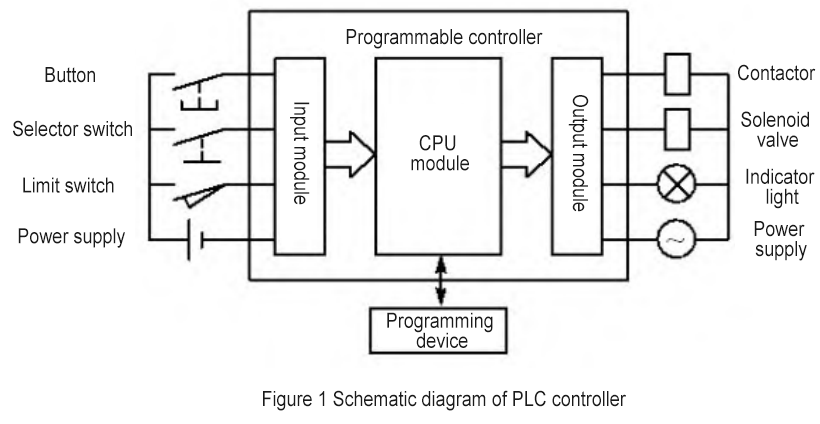
- English
- Español
- Português
- русский
- Français
- 日本語
- Deutsch
- tiếng Việt
- Italiano
- Nederlands
- ภาษาไทย
- Polski
- 한국어
- Svenska
- magyar
- Malay
- বাংলা ভাষার
- Dansk
- Suomi
- हिन्दी
- Pilipino
- Türkçe
- Gaeilge
- العربية
- Indonesia
- Norsk
- تمل
- český
- ελληνικά
- український
- Javanese
- فارسی
- தமிழ்
- తెలుగు
- नेपाली
- Burmese
- български
- ລາວ
- Latine
- Қазақша
- Euskal
- Azərbaycan
- Slovenský jazyk
- Македонски
- Lietuvos
- Eesti Keel
- Română
- Slovenski
- मराठी
- Srpski језик
Thermal Field Design for SiC Single Crystal Growth
2024-08-06
1 Importance of thermal field design in SiC single crystal growth equipment
SiC single crystal is an important semiconductor material, which is widely used in power electronics, optoelectronics and high-temperature applications. Thermal field design directly affects the crystallization behavior, uniformity and impurity control of the crystal, and has a decisive influence on the performance and output of SiC single crystal growth equipment. The quality of SiC single crystal directly affects its performance and reliability in device manufacturing. By rationally designing the thermal field, the uniformity of temperature distribution during crystal growth can be achieved, thermal stress and thermal gradient in the crystal can be avoided, thereby reducing the formation rate of crystal defects. Optimized thermal field design can also improve the crystal face quality and crystallization rate, further improve the structural integrity and chemical purity of the crystal, and ensure that the grown SiC single crystal has good electrical and optical properties.
The growth rate of SiC single crystal directly affects the production cost and capacity. By rationally designing the thermal field, the temperature gradient and heat flow distribution during the crystal growth process can be optimized, and the growth rate of the crystal and the effective utilization rate of the growth area can be improved. The thermal field design can also reduce energy loss and material waste during the growth process, reduce production costs, and improve production efficiency, thereby increasing the output of SiC single crystals. SiC single crystal growth equipment usually requires a large amount of energy supply and cooling system, and rationally designing the thermal field can reduce energy consumption, reduce energy consumption and environmental emissions. By optimizing the thermal field structure and heat flow path, energy can be maximized, and waste heat can be recycled to improve energy efficiency and reduce negative impacts on the environment.
2 Difficulties in thermal field design of SiC single crystal growth equipment
2.1 Non-uniformity of thermal conductivity of materials
SiC is a very important semiconductor material. Its thermal conductivity has the characteristics of high temperature stability and excellent thermal conductivity, but its thermal conductivity distribution has certain non-uniformity. In the process of SiC single crystal growth, in order to ensure the uniformity and quality of crystal growth, the thermal field needs to be precisely controlled. The non-uniformity of thermal conductivity of SiC materials will lead to the instability of thermal field distribution, which in turn affects the uniformity and quality of crystal growth. SiC single crystal growth equipment usually adopts physical vapor deposition (PVT) method or gas phase transport method, which requires maintaining a high temperature environment in the growth chamber and realizing crystal growth by precisely controlling the temperature distribution. The non-uniformity of thermal conductivity of SiC materials will lead to non-uniform temperature distribution in the growth chamber, thereby affecting the crystal growth process, which may cause crystal defects or non-uniform crystal quality. During the growth of SiC single crystals, it is necessary to perform three-dimensional dynamic simulation and analysis of the thermal field in order to better understand the changing law of temperature distribution and optimize the design based on the simulation results. Due to the non-uniformity of thermal conductivity of SiC materials, these simulation analyses may be affected by a certain degree of error, thus affecting the precise control and optimization design of the thermal field.
2.2 Difficulty of convection regulation inside the equipment
During the growth of SiC single crystals, strict temperature control needs to be maintained to ensure the uniformity and purity of the crystals. The convection phenomenon inside the equipment may cause the non-uniformity of the temperature field, thereby affecting the quality of the crystals. Convection usually forms a temperature gradient, resulting in a non-uniform structure on the crystal surface, which in turn affects the performance and application of the crystals. Good convection control can adjust the gas flow speed and direction, which helps to reduce the non-uniformity of the crystal surface and improve the growth efficiency. The complex geometric structure and gas dynamics process inside the equipment make it extremely difficult to accurately control the convection. High temperature environment will lead to a decrease in heat transfer efficiency and increase the formation of temperature gradient inside the equipment, thus affecting the uniformity and quality of crystal growth. Some corrosive gases may affect the materials and heat transfer elements inside the equipment, thereby affecting the stability and controllability of convection. SiC single crystal growth equipment usually has a complex structure and multiple heat transfer mechanisms, such as radiation heat transfer, convection heat transfer and heat conduction. These heat transfer mechanisms are coupled with each other, making convection regulation more complicated, especially when there are multiphase flow and phase change processes inside the equipment, it is more difficult to accurately model and control convection.
3 Key points of thermal field design of SiC single crystal growth equipment
3.1 Heating power distribution and control
In thermal field design, the distribution mode and control strategy of heating power should be determined according to the process parameters and requirements of crystal growth. SiC single crystal growth equipment uses graphite heating rods or induction heaters for heating. The uniformity and stability of the thermal field can be achieved by designing the layout and power distribution of the heater. During the growth of SiC single crystals, temperature uniformity has an important influence on the quality of the crystal. The distribution of heating power should be able to ensure the uniformity of temperature in the thermal field. Through numerical simulation and experimental verification, the relationship between heating power and temperature distribution can be determined, and then the heating power distribution scheme can be optimized to make the temperature distribution in the thermal field more uniform and stable. During the growth of SiC single crystals, the control of heating power should be able to achieve precise regulation and stable control of temperature. Automatic control algorithms such as PID controller or fuzzy controller can be used to achieve closed-loop control of heating power based on real-time temperature data fed back by temperature sensors to ensure the stability and uniformity of temperature in the thermal field. During the growth of SiC single crystals, the size of heating power will directly affect the crystal growth rate. The control of heating power should be able to achieve precise regulation of crystal growth rate. By analyzing and experimentally verifying the relationship between heating power and crystal growth rate, a reasonable heating power control strategy can be determined to achieve precise control of crystal growth rate. During the operation of SiC single crystal growth equipment, the stability of heating power has an important impact on the quality of crystal growth. Stable and reliable heating equipment and control systems are required to ensure the stability and reliability of heating power. The heating equipment needs to be regularly maintained and serviced to timely discover and solve faults and problems in the heating equipment to ensure the normal operation of the equipment and the stable output of heating power. By rationally designing the heating power distribution scheme, considering the relationship between heating power and temperature distribution, realizing precise control of heating power, and ensuring the stability and reliability of heating power, the growth efficiency and crystal quality of SiC single crystal growth equipment can be effectively improved, and the progress and development of SiC single crystal growth technology can be promoted.
3.2 Design and adjustment of temperature control system
Before designing the temperature control system, numerical simulation analysis is required to simulate and calculate the heat transfer processes such as heat conduction, convection and radiation during the growth of SiC single crystals to obtain the distribution of the temperature field. Through experimental verification, the numerical simulation results are corrected and adjusted to determine the design parameters of the temperature control system, such as heating power, heating area layout, and temperature sensor location. During the growth of SiC single crystals, resistance heating or induction heating is usually used for heating. It is necessary to select a suitable heating element. For resistance heating, a high-temperature resistance wire or a resistance furnace can be selected as a heating element; for induction heating, a suitable induction heating coil or induction heating plate needs to be selected. When selecting a heating element, factors such as heating efficiency, heating uniformity, high temperature resistance, and the impact on thermal field stability need to be considered. The design of the temperature control system needs to consider not only the stability and uniformity of the temperature, but also the temperature adjustment accuracy and response speed. It is necessary to design a reasonable temperature control strategy, such as PID control, fuzzy control or neural network control, to achieve accurate control and adjustment of the temperature. It is also necessary to design a suitable temperature adjustment scheme, such as multi-point linkage adjustment, local compensation adjustment or feedback adjustment, to ensure uniform and stable temperature distribution of the entire thermal field. In order to realize the precise monitoring and control of the temperature during the growth of SiC single crystals, it is necessary to adopt advanced temperature sensing technology and controller equipment. You can choose high-precision temperature sensors such as thermocouples, thermal resistors or infrared thermometers to monitor the temperature changes in each area in real time, and choose high-performance temperature controller equipment, such as PLC controller (see Figure 1) or DSP controller, to achieve precise control and adjustment of heating elements. By determining the design parameters based on numerical simulation and experimental verification methods, selecting appropriate heating methods and heating elements, designing reasonable temperature control strategies and adjustment schemes, and using advanced temperature sensing technology and controller equipment, you can effectively achieve precise control and adjustment of the temperature during the growth of SiC single crystals, and improve the quality and yield of single crystals.

3.3 Computational Fluid Dynamics Simulation
Establishing an accurate model is the basis for computational fluid dynamics (CFD) simulation. SiC single crystal growth equipment is usually composed of a graphite furnace, an induction heating system, a crucible, a protective gas, etc. In the modeling process, it is necessary to consider the complexity of the furnace structure, the characteristics of the heating method, and the influence of material movement on the flow field. Three-dimensional modeling is used to accurately reconstruct the geometric shapes of the furnace, crucible, induction coil, etc., and consider the thermal physical parameters and boundary conditions of the material, such as heating power and gas flow rate.
In CFD simulation, commonly used numerical methods include the finite volume method (FVM) and the finite element method (FEM). In view of the characteristics of SiC single crystal growth equipment, the FVM method is generally used to solve the fluid flow and heat conduction equations. In terms of meshing, it is necessary to pay attention to subdividing key areas, such as the graphite crucible surface and the single crystal growth area, to ensure the accuracy of the simulation results. The growth process of SiC single crystal involves a variety of physical processes, such as heat conduction, radiation heat transfer, fluid movement, etc. According to the actual situation, appropriate physical models and boundary conditions are selected for simulation. For example, considering the heat conduction and radiation heat transfer between the graphite crucible and the SiC single crystal, appropriate heat transfer boundary conditions need to be set; considering the influence of induction heating on fluid movement, the boundary conditions of induction heating power need to be considered.
Before CFD simulation, it is necessary to set the simulation time step, convergence criteria and other parameters, and perform calculations. During the simulation process, it is necessary to continuously adjust the parameters to ensure the stability and convergence of the simulation results, and post-process the simulation results, such as temperature field distribution, fluid velocity distribution, etc., for further analysis and optimization. The accuracy of the simulation results is verified by comparing with the temperature field distribution, single crystal quality and other data in the actual growth process. According to the simulation results, the furnace structure, heating method and other aspects are optimized to improve the growth efficiency and single crystal quality of SiC single crystal growth equipment. CFD simulation of thermal field design of SiC single crystal growth equipment involves establishing accurate models, selecting appropriate numerical methods and meshing, determining physical models and boundary conditions, setting and calculating simulation parameters, and verifying and optimizing simulation results. Scientific and reasonable CFD simulation can provide important references for the design and optimization of SiC single crystal growth equipment, and improve growth efficiency and single crystal quality.
3.4 Furnace structure design
Considering that SiC single crystal growth requires high temperature, chemical inertness and good thermal conductivity, the furnace body material should be selected from high temperature and corrosion-resistant materials, such as silicon carbide ceramics (SiC), graphite, etc. SiC material has excellent high temperature stability and chemical inertness, and is an ideal furnace body material. The inner wall surface of the furnace body should be smooth and uniform to reduce thermal radiation and heat transfer resistance and improve thermal field stability. The furnace structure should be simplified as much as possible, with fewer structural layers to avoid thermal stress concentration and excessive temperature gradient. A cylindrical or rectangular structure is usually used to facilitate uniform distribution and stability of the thermal field. Auxiliary heating elements such as heating coils and resistors are set inside the furnace to improve temperature uniformity and thermal field stability and ensure the quality and efficiency of single crystal growth. Common heating methods include induction heating, resistance heating and radiation heating. In SiC single crystal growth equipment, a combination of induction heating and resistance heating is often used. Induction heating is mainly used for rapid heating to improve temperature uniformity and thermal field stability; resistance heating is used to maintain a constant temperature and temperature gradient to maintain the stability of the growth process. Radiation heating can improve the temperature uniformity inside the furnace, but it is usually used as an auxiliary heating method.
4 Conclusion
With the growing demand for SiC materials in power electronics, optoelectronics and other fields, the development of SiC single crystal growth technology will become a key area of scientific and technological innovation. As the core of SiC single crystal growth equipment, thermal field design will continue to receive extensive attention and in-depth research. Future development directions include further optimizing thermal field structure and control system to improve production efficiency and single crystal quality; exploring new materials and processing technology to improve equipment stability and durability; and integrating intelligent technology to achieve automatic control and remote monitoring of equipment.



